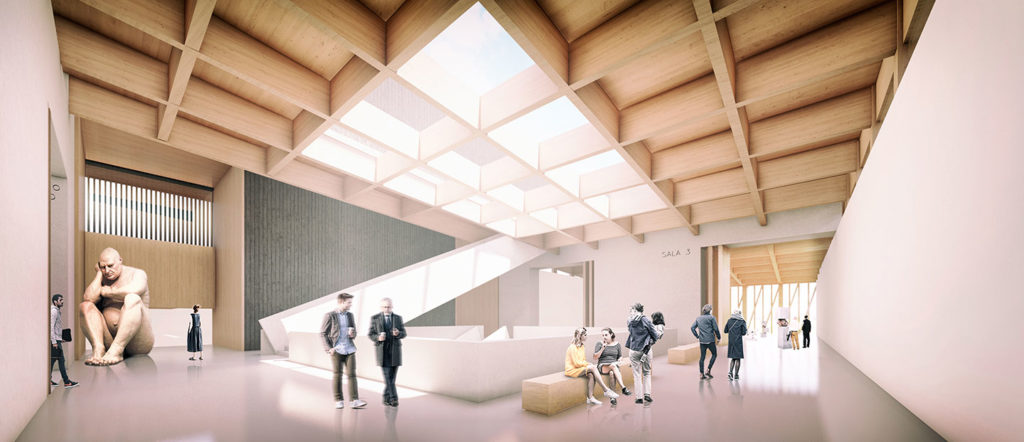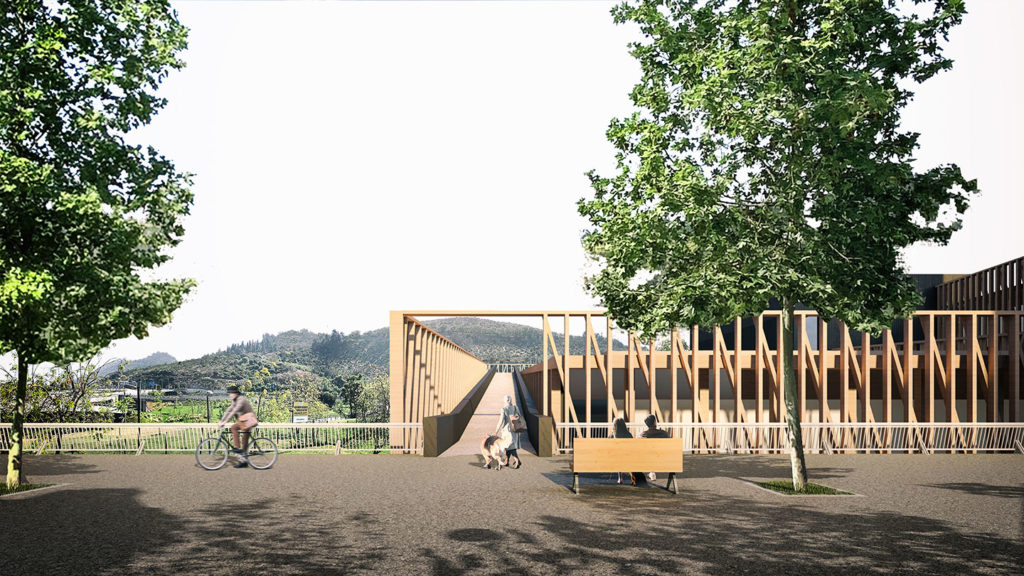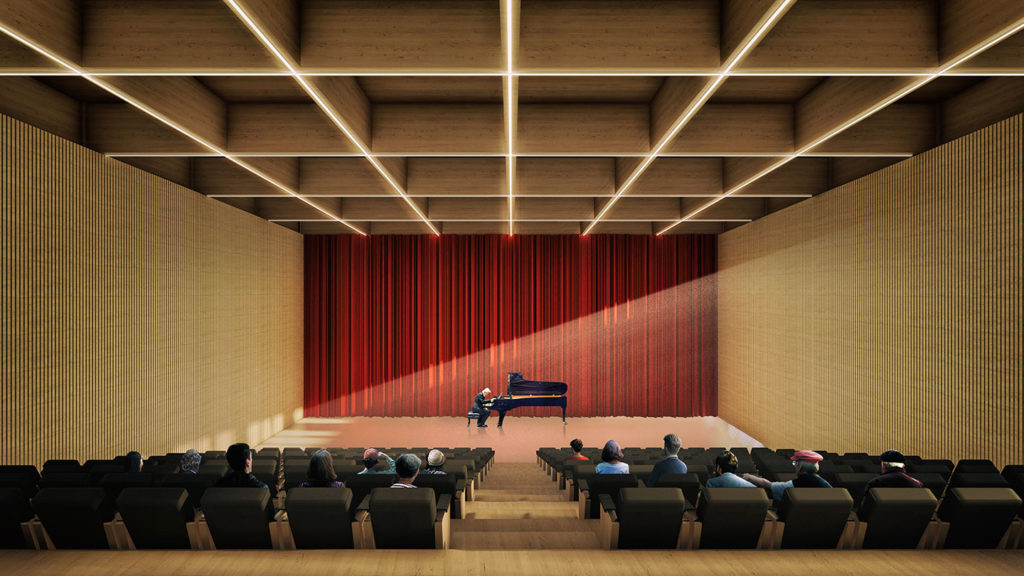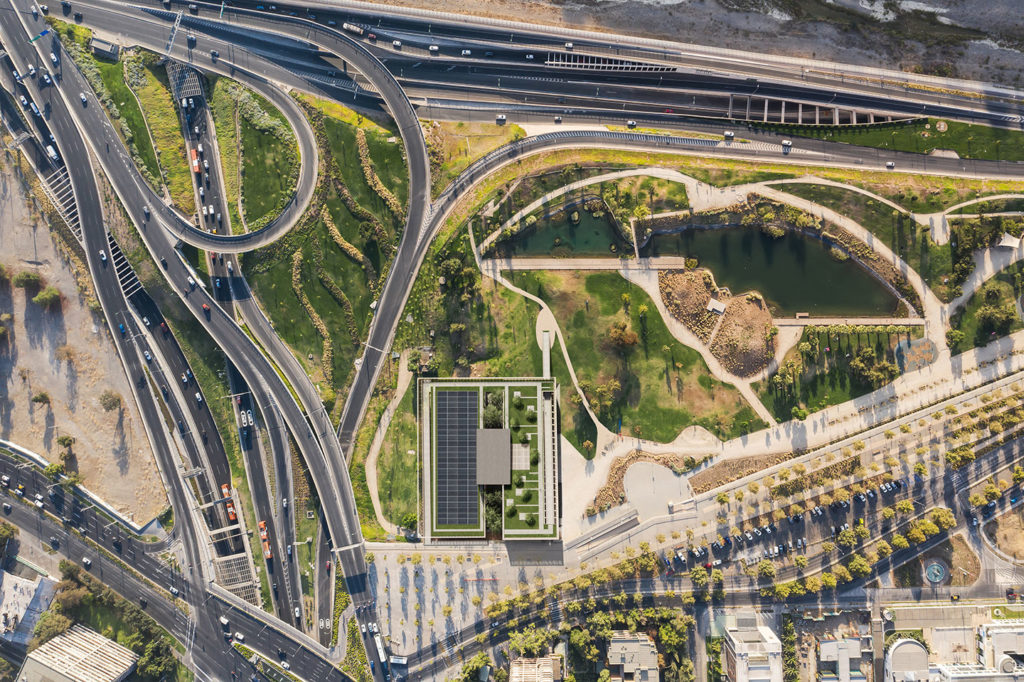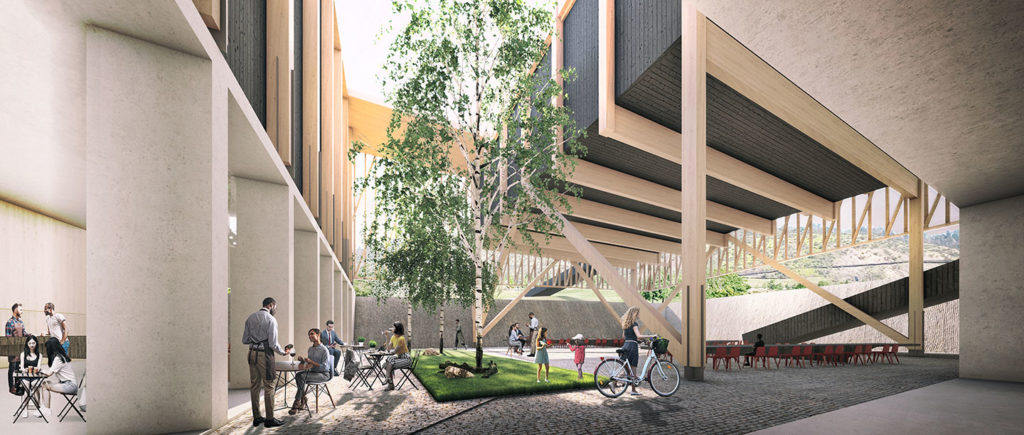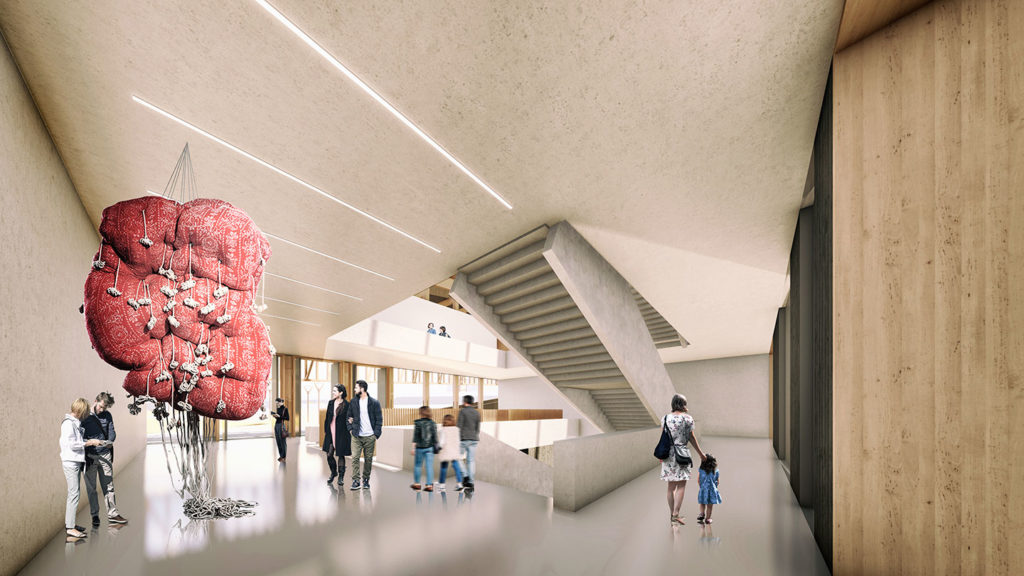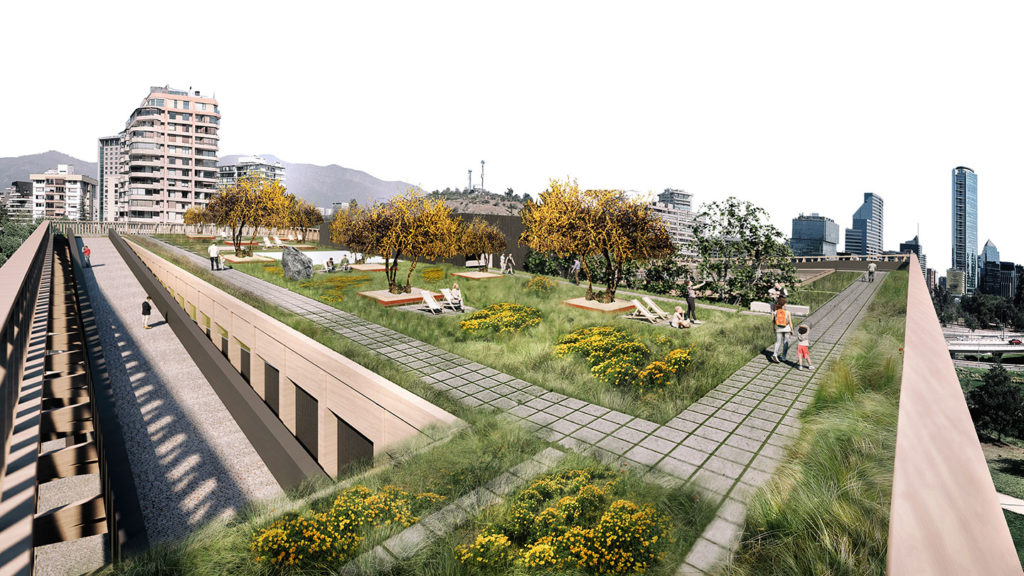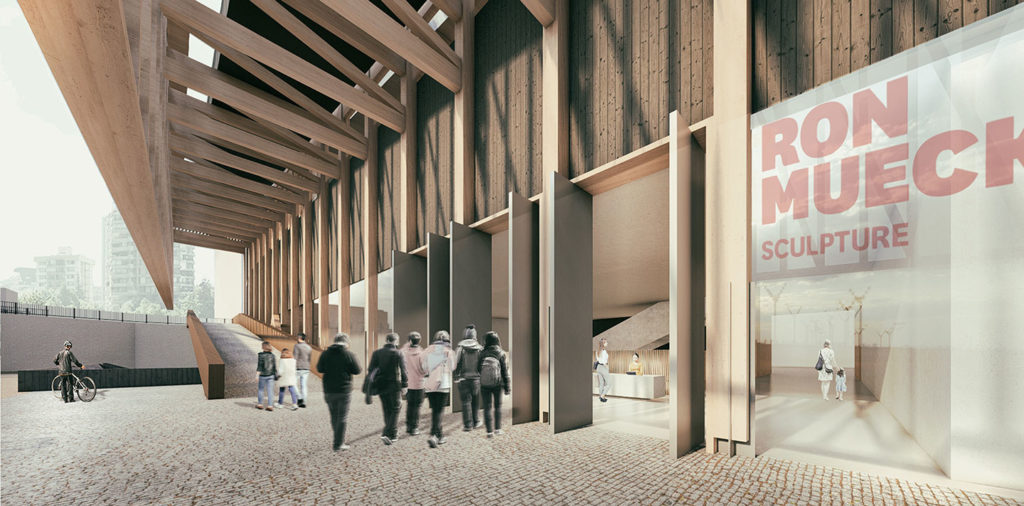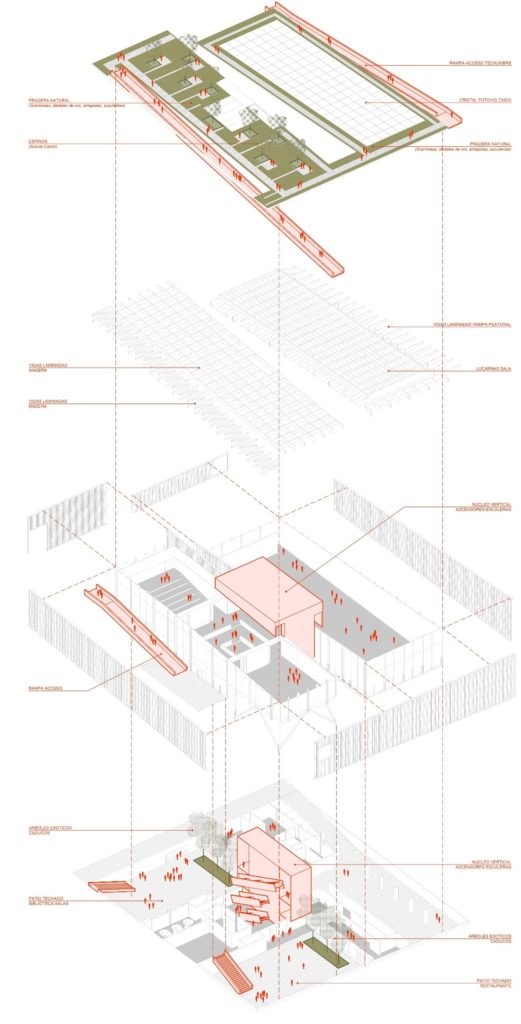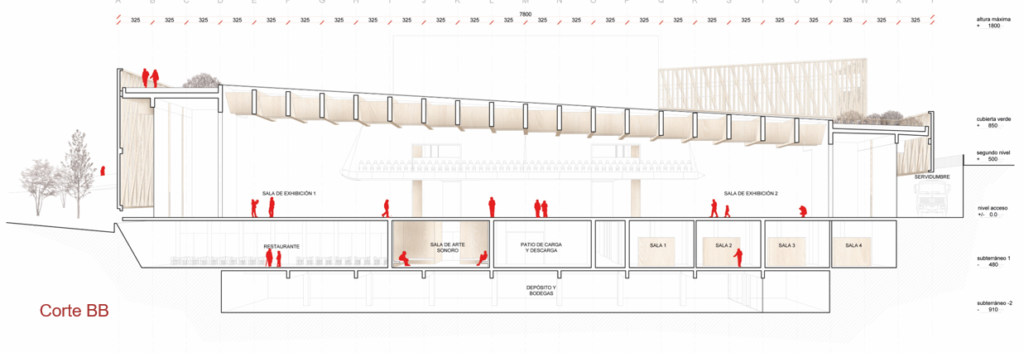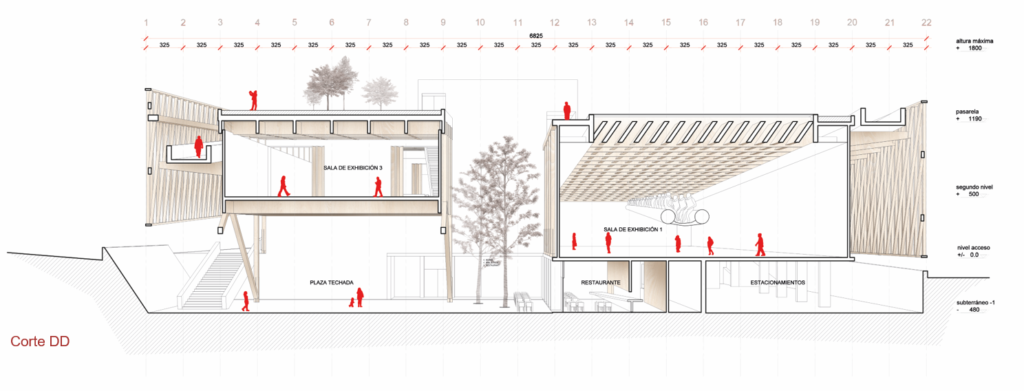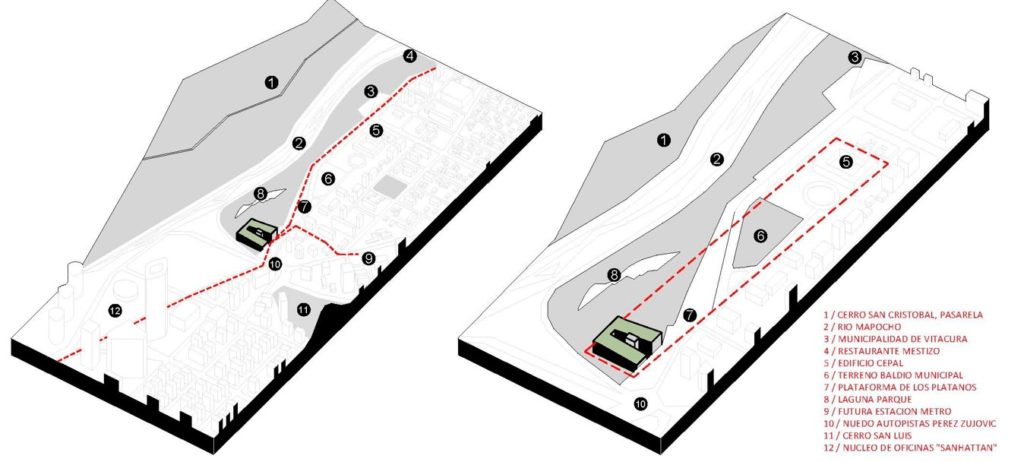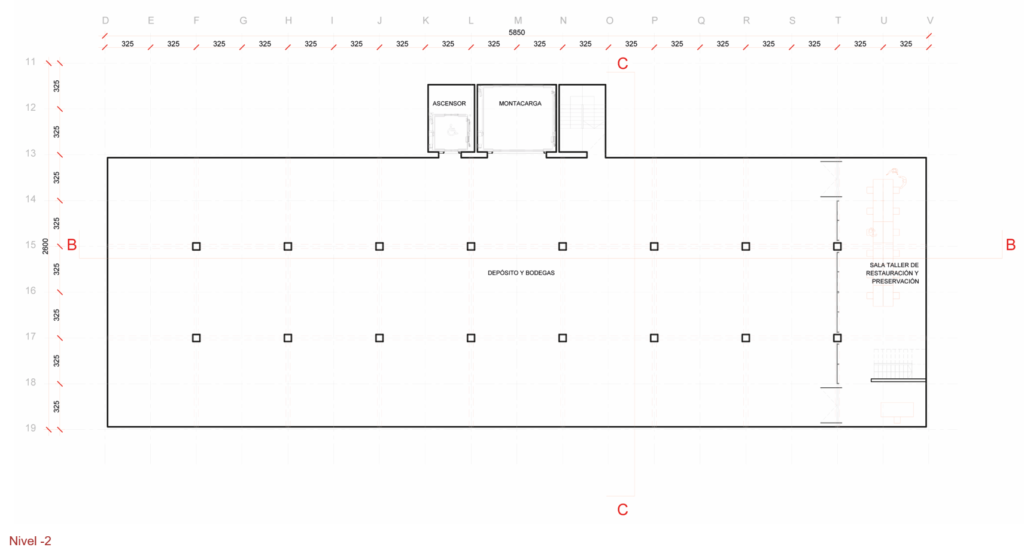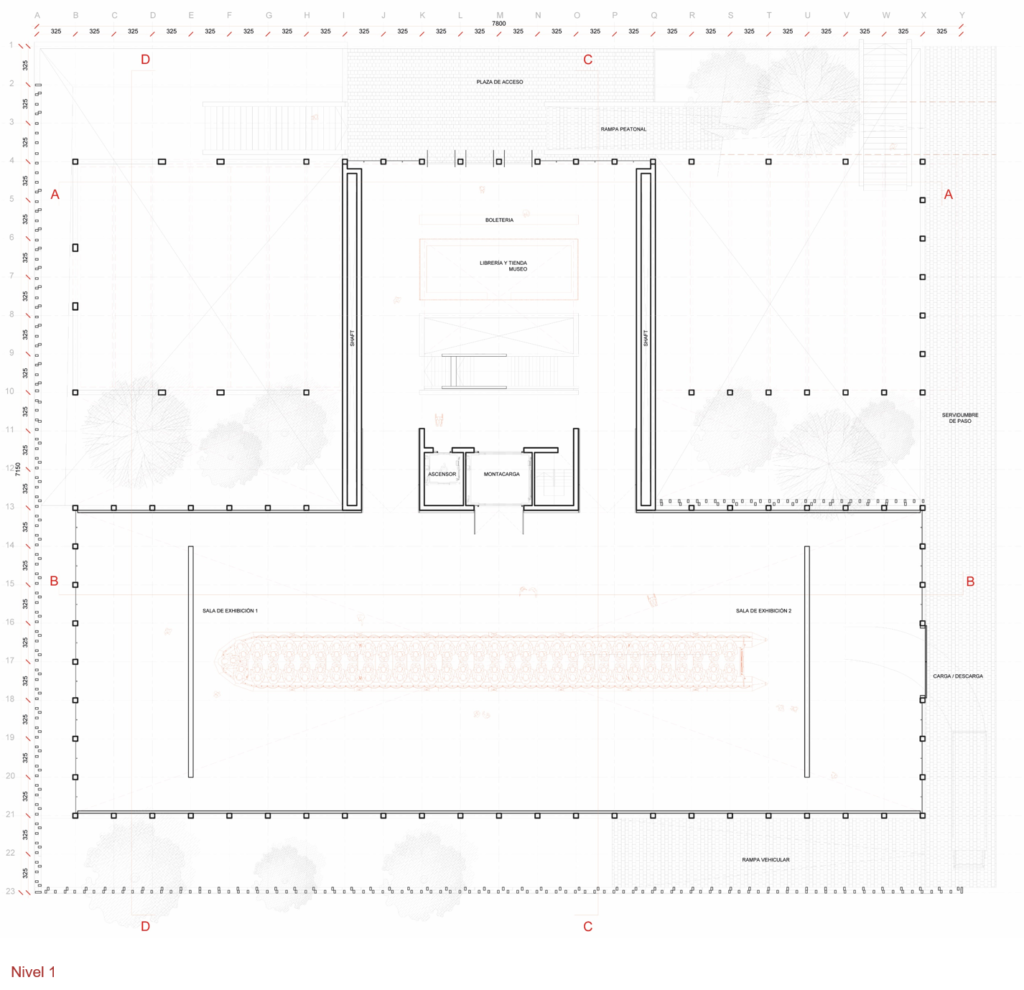Arquitectos
MATHIAS KLOTZ + SML ARQUITECTOS
Colaboradores
Trinidad Millán
Freddy Lugo
Eduardo Ruíz-Risueño
Maximiliano De La Jara
Joaquín Iturriaga
33°24’23.0″S 70°36’07.6″W
Superficie: 7.500m2
Santiago, Chile
2021
Museum + Promenade
The competition for the New Museum of Santiago (NUMU) poses the challenge of thinking about the construction of a new cultural space of 7500 m2 located in an important urban park such as the Bicentennial Park of Vitacura, which has transcended its communal scale to become a relevant green area of metropolitan scale.
The fact of being located in a public park is not an innocuous decision and, on the contrary, it involves a responsibility that goes beyond the correct programmatic resolution of a building, since proposing a private building in a green area for public use will generate friction with an increasingly empowered community. Thus, the proposal must necessarily offer additional value to the park and, through its design, improve its current conditions.
The location of the project within the park itself is also no coincidence, as it is an end that is currently underutilized but has the strategic potential to become its main access, as it is located next to a node where major avenues, urban highways and the future extension of the subway network converge. Thus, the building will also have the potential to be a landmark that marks the beginning -and end- of the Bicentennial Park.
The proposal is based on 3 main operations that guide the project:
The first operation was to raise the surface of green area that the building takes at ground level and bring it to the roof consolidating an upper viewpoint of free access, under which the Museum will be developed. This roof is slightly inclined, one half towards the street, with a view of the Cerro San Luis and the other half inclined towards the Cerro San Cristobal and the Mapocho River to the northwest, generating a plaza for contemplation and rest in which its slope is somewhat reminiscent of the “Campo de Siena” in Italy (image 1), thus recognizing the immediate environment and the surrounding geographical landmarks.
The second operation was to raise this upper viewpoint on a constructive system based on a structural grid of laminated wood frames, which generates a permeable and lightweight support scaffolding capable of interacting with the park and housing the different parts of the program. The use of wood also acknowledges Chile’s extensive history of timber architecture and gives the complex its own local identity.
The third and perhaps the most important operation, which articulates all the previous points, is the arrangement of a system of walkways and public paths that are placed perimetrically in the interstices that occur between the museum and the structural scaffolding, evoking to some extent the Water Tower of the Amereida Corporation in Ritoque. This system of ramps is freely accessible and generates an independent public walkway that connects the Paseo de los Plátanos, the Park and this new upper viewpoint. In this way a route is created that makes the experience of walking to and from the park memorable, generating different visual relationships and interacting at certain points with the museum itself, integrating it into the circuit and providing new points of view of the geography of the valley of Santiago.
KEY CONCEPTS:
Versatile exhibition space
The museum is articulated around a central foyer around which the large exhibition halls are distributed, keeping the circulation area to a minimum. These rooms can be joined together to form a large area of 2000 m2, while at the same time they can be compartmentalized for smaller and more varied exhibitions, taking advantage of the structural grid of the sky. This, together with an interior clear height of more than 10 meters, makes it possible to accommodate large exhibitions. On the other hand, exhibition hall 3 has the possibility of joining the multipurpose hall to form a large space of 1000m2.
Beyond a Museum
The proposal aims to generate links with the community, beyond the operation of the Museum. This is why the entire annex program, classrooms, library, auditorium, restaurant, cafeteria and the upper viewpoint, is linked to the Museum, but with an operation that can be independent of it. This is achieved by placing this program in courtyards that are directly linked to the Park and the public space, thus becoming part of its equipment, bringing culture closer to everyday use.
Territory as landscape value
Since the competition is for Architecture and Landscaping, the landscape proposal for the NUMU museum is fundamental and aims to enhance the value of the surrounding landscape and enhance the scenic value of the site.
A natural meadow is proposed on the roof of the museum, composed of grasses, flowers and hawthorns, all species typical of our hills of the metropolitan basin. This plant association contributes ecologically to a system of hills and particularly to an important corridor of green spaces along the banks of the Mapocho River. Two wooded courtyards inside the museum allow the park to be incorporated into its interior.
Sustainability
The project is conceived as a sustainable building using five resources:
1.- Pre-fabricated wooden elements: The prefabricated laminated wood structure minimizes the impact on the park during construction and can ultimately be dismantled in the manner of the large pavilions that have been placed in parks around the world.
2.- Green roof: The public viewpoint containing native vegetation not only restores the green area that the building could have taken, but also serves as a passive climate comfort control.
3.- Natural lighting and photovoltaic crystals: Carefully studied skylights (image 3) are proposed to illuminate naturally and indirectly the 2 main exhibition halls, minimizing the use of artificial light. These skylights contain photovoltaic glazing to capture energy and use it to reduce the building’s energy consumption.
4.- Cross ventilation: All the main rooms can be ventilated naturally and cross ventilated, which allows substantial savings in air conditioning costs.
5.- Geothermal climate control.
The Museum as an urban piece
Ultimately, the building is added to its surroundings as a new urban piece that ends up configuring the limits of the Bicentennial Park, with the Mestizo Restaurant at the other end, the Vitacura Civic Center in the middle and now the NUMU as the southern end. In addition, given its geometry and dimension in plan, it establishes another axis of relationship with the ECLAC building, one of the best examples of modern architecture in Chile (image 5), capable of detonating in the future the unused green area esplanade between both buildings as a new public space.


